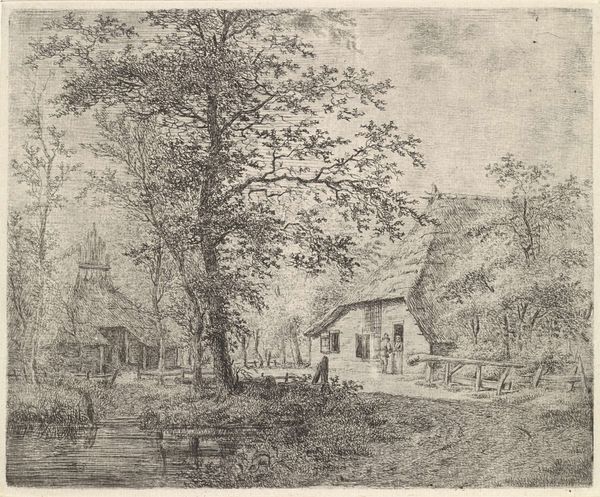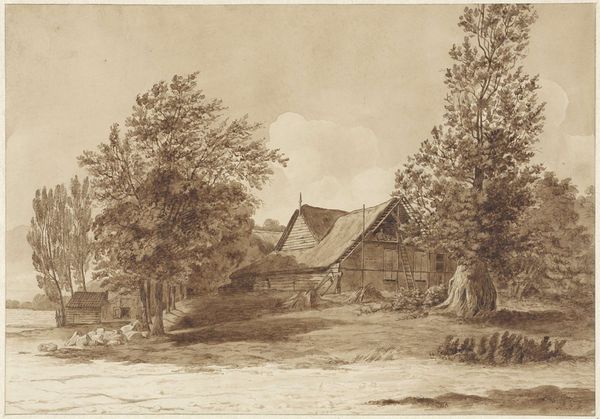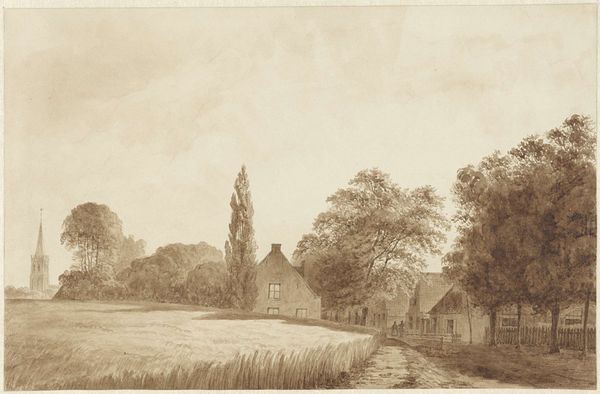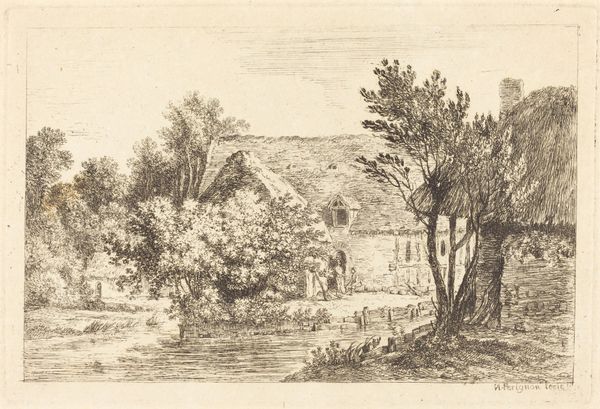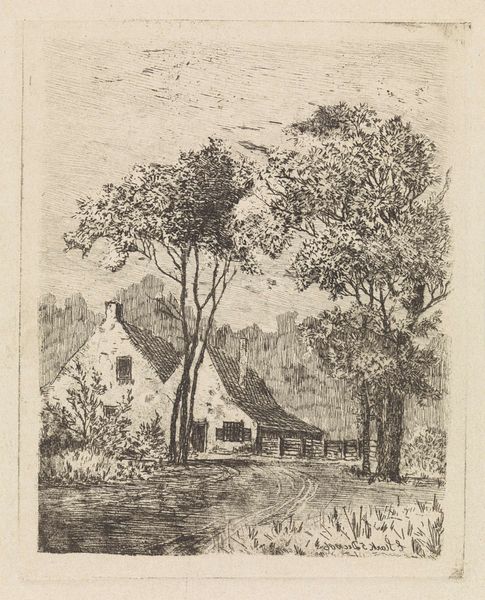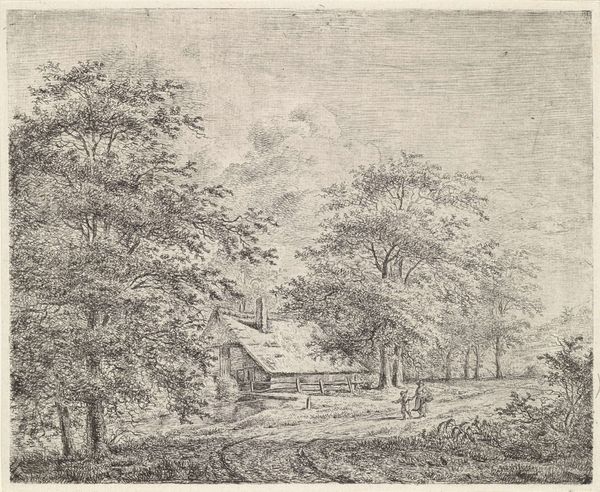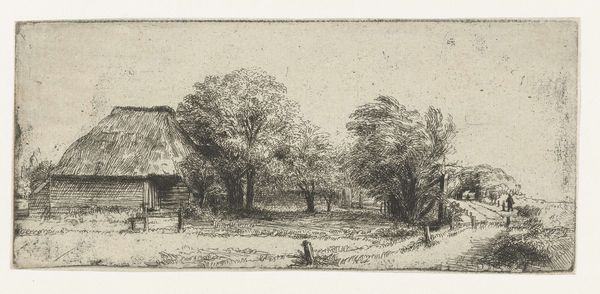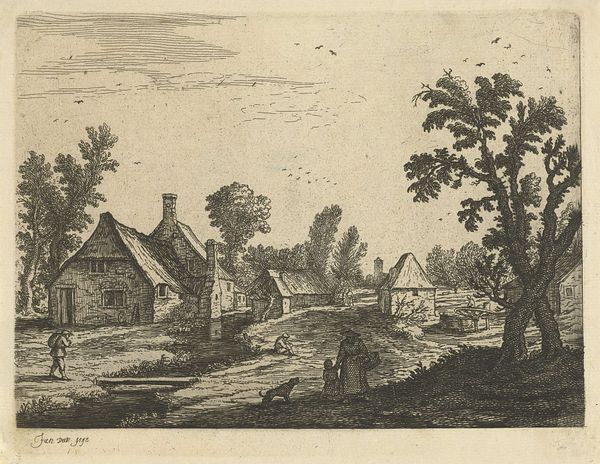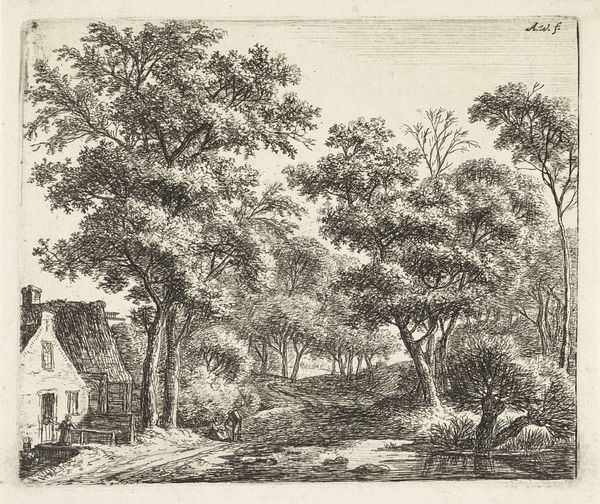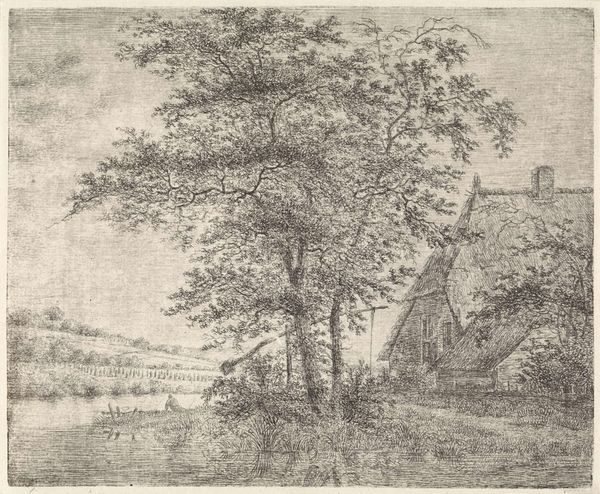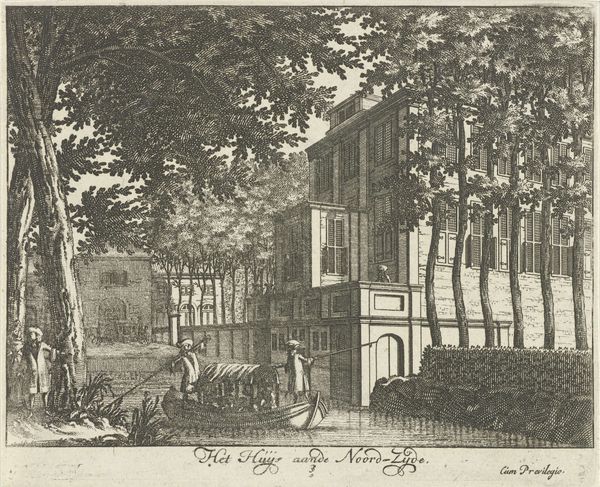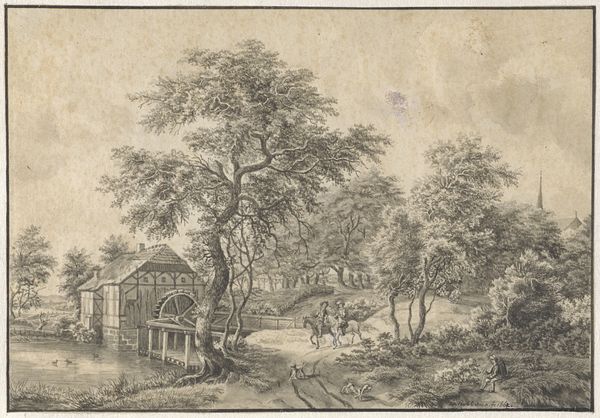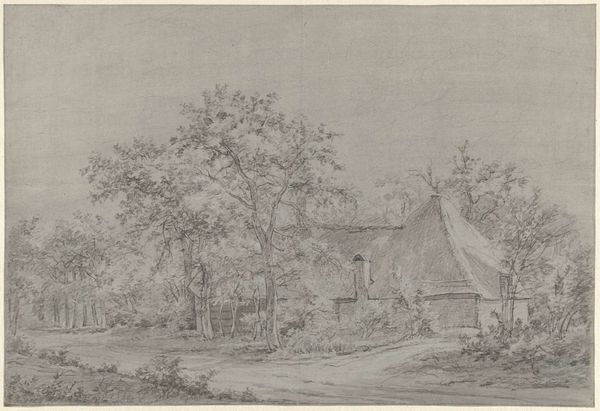
Boerderij met drinkende koe aan de Biltstraat te Utrecht 1856 - 1858
0:00
0:00
hendrikabrahamklinkhamer
Rijksmuseum
painting, plein-air, watercolor
#
painting
#
plein-air
#
landscape
#
watercolor
#
carved into stone
#
watercolour illustration
#
genre-painting
#
watercolor
#
realism
Dimensions: height 118 mm, width 190 mm
Copyright: Rijks Museum: Open Domain
Curator: Welcome. Before us is Hendrik Abraham Klinkhamer’s “Farm with a Cow Drinking at Biltstraat in Utrecht," executed between 1856 and 1858. It is now housed in the Rijksmuseum. Editor: My initial impression is one of quietude, a peaceful stillness achieved through the artist’s delicate use of watercolor and the soft, muted palette. It almost feels like looking at a faded memory. Curator: Indeed. Note the careful arrangement of elements—the bridge, the waterway, the farmhouse nestled among the trees. Klinkhamer is masterful in guiding our eye through the pictorial space with these perspectival lines. The composition is structured around balance. Editor: And yet, while seemingly idyllic, I wonder about the broader social context. We're seeing rural life represented during a period of intense urbanization in the Netherlands. This romantic vision may serve as a commentary—or perhaps a distraction—from the rapid societal shifts occurring at the time. The drinking cow can also be thought of a the exploited element which helps fuel city progress. Curator: A compelling interpretation. Considering the materiality of the piece—the delicate washes of watercolor—one might also reflect on the formal qualities of the image itself. See how the translucent paint layers interact with the paper, creating an ethereal light and atmosphere? The brown colour washes gives an impression of past rather than present. Editor: Yes, and thinking about light, observe its source. Everything is subtly lit but never highlighted. The artist gives us a sense of pastoral calmness, although the overall sombre and brownish colour is still prevalent. Is the choice an appeal to an untouched rural simplicity which many people were beginning to feel they have been loosing in times of big city development? Curator: Ultimately, Klinkhamer’s work embodies both a serene beauty and formal skill. Editor: And encourages us to question how idyllic portrayals function within the landscape of larger cultural transformations.
Comments
No comments
Be the first to comment and join the conversation on the ultimate creative platform.
